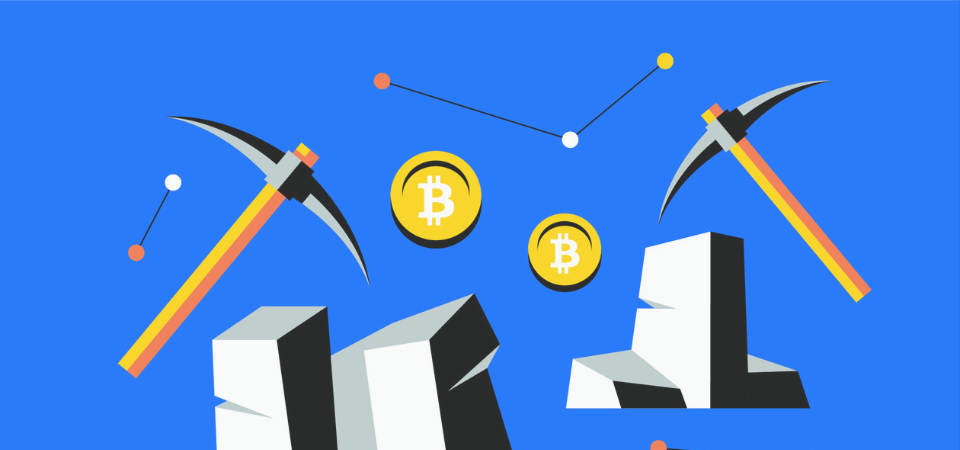Cryptocurrency mining is a process created to secure and validate transactions in a blockchain network. In return, miners receive coins as a reward. And that is an essential aspect of the decentralized system that makes cryptocurrencies such as Bitcoin and Ethereum functional. This article will delve into the technicalities of how cryptocurrency mining works and how it operates.
Crypto mining: What is it?
Cryptocurrency mining is more than merely creating new currencies, as many people believe. Crypto mining validates blockchain transactions and adds them to a decentralized ledger. Importantly, it prevents digital money from double-spending across a distributed network.
Spending bitcoin depletes one account and credits another, much like traditional money. Digital money’s susceptibility to network manipulation is unique. Bitcoin’s distributed ledger enforces double-spending prevention by allowing only verified miners to amend transactions.
The procedure also rewards miners with new currencies for network security. The absence of centralized authority in distributed ledgers makes mining a key transaction validation technique. Thus, miners are urged to validate new currencies to preserve network security and enhance their chances of winning.
Proof-of-work (PoW) consensus was used to secure mining and transaction validation. PoW authenticates miners and defends the network.
Proof-of Work
In many ways, crypto mining resembles the process of extracting precious metals from the earth. While traditional miners unearth gold, silver, or diamonds, crypto miners facilitate the release of new coins into circulation. To earn these coins, miners employ specialized machines to tackle intricate mathematical problems presented as cryptographic hashes. A hash serves as a condensed digital signature for a specific data set, ensuring the security of data transmitted over a public network. Miners engage in a competitive race to identify the precise hash value associated with a crypto coin transaction. The first miner to successfully decode the hash is granted the privilege of appending the block to the ledger and receiving the corresponding reward.
Each block in the blockchain utilizes a hash function to reference the preceding block, thus forming an unbroken chain tracing back to the initial block. This design enables network peers to swiftly verify the validity of individual blocks and confirm whether the miners accurately solved the hash to earn their rewards.
As miners progressively deploy more sophisticated machinery to tackle Proof-of-Work (PoW) challenges, the complexity of equations within the network escalates. Simultaneously, heightened competition among miners ensues, leading to increased scarcity of cryptocurrency over time.
Specialized Hardware and how mining works
Cryptocurrency mining is a computationally intensive process that requires specialized hardware, such as Application-Specific Integrated Circuits (ASICs). These devices are specifically designed for how cryptocurrency mining works and are much more efficient than general-purpose computing devices. Miners often have to invest a considerable amount of money to purchase and maintain the hardware, but the rewards for successful mining can be substantial.
Mining Rewards
The reward for mining a block differs between cryptocurrencies, but the most common prize is a set number of coins. For instance, in the case of Bitcoin, the reward is currently 6.25 BTC. In addition, to the block reward, miners also earn transaction fees. Users pay to incentivize miners to include their transactions in the block.
As the network grows, the difficulty of mining increases, making it more challenging to earn rewards. That is why many individual miners have come together to form mining pools, where their computing power combines to boost their chances of earning rewards.
Mining Pools
Mining pools are collaborative platforms where miners pool their computing capabilities to increase the chance of finding and mining blocks on a blockchain. After successful mining, the reward is given to pool members according to their individual efforts. While most cryptocurrency mining software has mining pool capabilities, a growing number of crypto enthusiasts prefer to create bespoke mining pools via internet cooperation. Miners have the ability to swap pools as required, since some pools provide bigger payouts than others. Official crypto mining pools are often seen as more reliable solutions by miners since they get frequent updates from their hosting firms as well as steady technical assistance. CryptoCompare is an excellent site for identifying mining pools, since it allows miners to compare pools based on characteristics such as trustworthiness, profitability, and preferred coin for mining.
Energy Consumption
Cryptocurrency mining requires a lot of energy to power the ASICs, which can result in high energy costs. The energy consumption of the network continues to grow as more miners join, adding more processing power, which is a significant concern for the long-term sustainability of the network.
Conclusion
Cryptocurrency mining is a complex and crucial process that is the backbone of many decentralized digital currencies. Miners play a crucial role in securing the network and validating transactions, and they are incentivized to participate through rewards. While the high energy consumption associated with mining is a concern, it is also an issue that needs to be addressed for the long-term sustainability of the network.
Disclaimer: The information provided herein is for educational and informational purposes only. It does not constitute financial, investment, or legal advice. Any reliance on the information presented is at your own risk.





